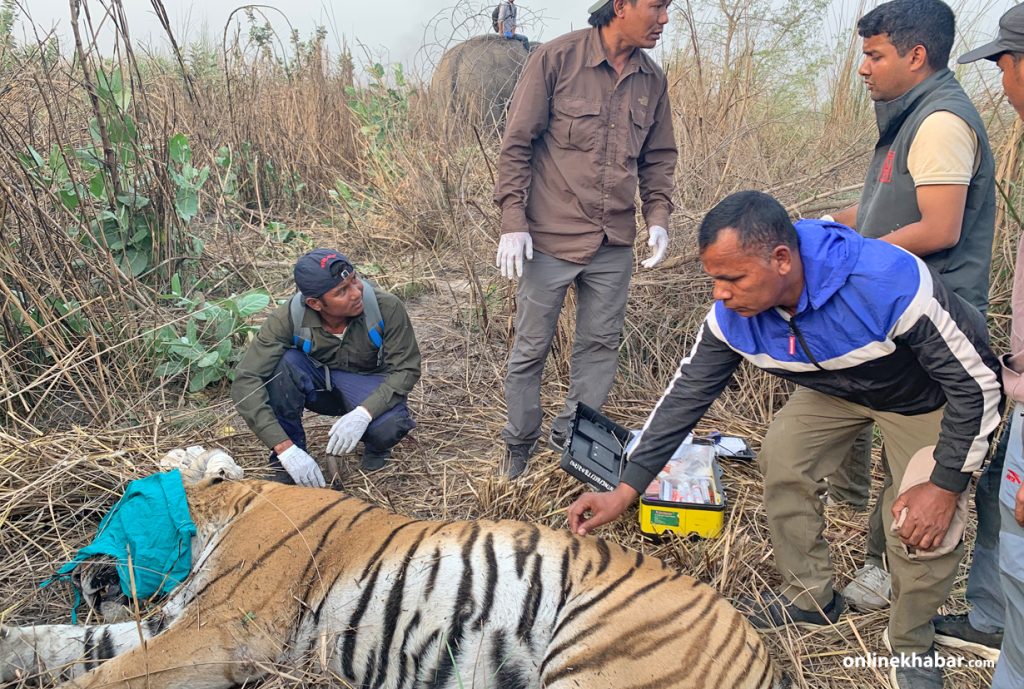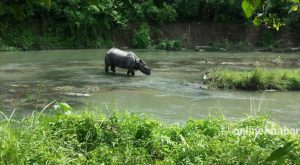
Nepal is predominantly an agricultural nation, encompassing 66 per cent of the total population of agricultural activities. Alongside agriculture, people depend on forests for a variety of natural products and services that sustain human existence.
For instance, most of the firewood and fodder used by the nation, which are both obtained from forests, make up roughly 75 per cent of the country’s energy supply and 37 per cent of its animal feed, respectively.
As documented in the annual report (2022/2023) published by the Department of National Parks and Wildlife Conservation, the country experienced 246 instances of wildlife attacks on humans, resulting in 58 deaths and 116 critical injuries.
A substantial portion of the deceased and wounded individuals hail from communities residing in proximity to wildlife habitats and buffer zones within protected regions.
Increased human-wildlife conflicts may be due to the socio-economically disadvantaged population living close to protected areas, heavily reliant on resources inside these areas.
Recently, on the occasion of International Tiger Day, Nepal declared that an extraordinary feat of 190 per cent increase in the number of wild tigers since 2009 had been achieved. The most recent census shows that there are 355 individuals of these apex predators. This indicates that the wildlife conservation scenario in Nepal appears commendable. However, a major question arises here: At what cost?
Current scenario

These commendable achievements and accolades in conservation efforts are accompanied by the fear instilled in the hearts of human communities residing close to these surging tiger populations.
In the past 12 months, 16 people have been killed by tigers in Nepal which is a sharp increase compared to the previous five years, when a combined total of 10 people were killed.
The territorial carnivores require expansive spaces for their survival. As the number of these animals increases, many weaker individuals of the species are forced out of the protected areas and start roaming in human settlements and nearby forests.
Records show 36 instances of tiger attacks in the country, in which 21 people were killed. This trajectory has compelled numerous individuals to abandon their homes, grappling with the profound loss of both cherished kin and valuable livestock.
Among the recorded human-carnivore conflicts, the human-leopard conflict is the most frequently recorded. About an average of 25 people were killed by leopards between 1994 and 2004.
The unsettling news of 14 children falling victim to leopard attacks in Tanahun over the past five years continues to evoke distress within the local community. The victims were all under 12 years old, amplifying the gravity of the situation.
Clips and newspaper articles about wildlife attacks circulate daily on the news and social media. In the year 2022/23, the country witnessed 246 instances of wildlife attacks on humans, resulting in 58 fatalities and 116 individuals sustaining critical injuries.
Predominantly, such cases are registered in and around the protected areas. As outlined in the Department of National Parks and Wildlife Conservation’s annual report for the same fiscal year, 75 instances of wildlife attacks on humans were recorded within Chitwan National Park, while Bardiya National Park accounted for 24 cases.
Of the recorded human injuries and causalities caused by wildlife, 44 cases of wildlife attacks were caused by elephants in the year 2022/23. Between the years 2000 and 2020, the country recorded 412 elephant attacks (274 deaths and 138 injuries), with a significant majority (71 per cent) of the victims belonging to the age group of 25 to 64 years.
Notably, the prevalence of these attacks was greater outside the protected areas (59.5 per cent) than inside. This may be the result of the larger space requirements of the elephants to fulfil their nutritional and social demands.
The home ranges of elephants do not only include protected areas but also the surrounding regions along with human-use areas in fragmented habitats.
The study showed that people’s increasing awareness of elephant behaviours and mitigation measures have been taking place accordingly. However, outside of protected areas, people react to elephants more violently because of a lack of understanding, which leads to a significant number of human casualties.
The research conducted on instances of human-elephant conflicts in Nepal shows around 10,798 records of human-elephant conflicts between January 2000 and June 2020. Out of which, the country recorded 6,606 cases of crop damage and 3,757 cases of property damage.
The food sources inside the protected areas cannot fulfil the demands of the elephants, so they venture beyond into the agriculture fields and farmlands in search of sufficient food and nutrition resources.
What does the study show?

The study also shows that human-elephant conflict incidents are relatively high in the eastern part of Nepal. This trend might potentially be attributed to the migratory movement of elephants from India to Nepal through diverse corridors.
The notable escalation in crop raiding remains a significant problem for wildlife management. A total of 5,633 cases of crop damage were recorded in the fiscal year of 2022/23 according to the annual report of the Department of National Parks and Wildlife Conservation. Crop damage from animals like rhinos, wild boars, elephants, rhesus monkeys, etc. has been constantly highlighted in the nation’s media landscape.
Carnivores such as tigers, leopards, snow leopards, and jungle cats infiltrate human settlements, attacking and killing domestic animals. In the fiscal year 2022/23, a total of 6,047 cases of livestock damage were officially documented, with leopards (3,946 cases) and snow leopards (1,193 cases) being the most recurrent culprits. Leopards are a major fear factor for farmers involved in animal husbandry in hilly regions. These creatures are known to prey on a variety of domestic animals, ranging from sizable buffalos to diminutive dogs.
Escalating interspecies competition within protected areas, along with the increasing number of larger carnivores such as tigers and the amplifying effects of climate change on temperature, collectively compel leopards to roam closer to human settlements in the nearby forests.
Consequently, the probability of interactions between leopards and livestock increases, particularly due to the common practice of utilising forested grasslands as grazing fields for livestock.
The news and videos of leopards entering human households and attacking pets, such as dogs, have been circulating on the internet. Smaller mammals such as yellow-throated marten, jungle cat, and golden jackal have been generating problems for various farmers, targeting smaller domesticated animals like chickens and ducks.
In the Trans-Himalayan regions of Nepal, livestock depredation by snow leopards and Himalayan wolves is on the rise. Particularly, snow leopards are perceived as major threats to livestock. The most recent recorded news was at Mustang, Dhakmar where more than 100 chyangra (cashmere goats) were killed.
When will human-wildlife coexistence occur?

When addressing the controlling of “man-eaters” (tigers responsible for human killings), several options come into play. These include the use of sedative drugs, the relocation of the animals to zoos or designated warden’s facilities, and the confinement of the man-eaters within holding cells. But, how long will these man-eaters remain confined?
The duration of their captivity raises ethical and practical concerns. While ensuring the safety of both humans and tigers is paramount, a balance must be struck between safeguarding human lives and preserving the well-being and natural behaviours of these animals. Determining an appropriate timeframe for the confinement of man-eaters is a complex issue that necessitates careful consideration of ecological, ethical, and conservation factors.
The fundamental objective of conservation centres on facilitating the harmonious cohabitation of wildlife and human communities. The term ‘coexistence’ itself possesses a certain vagueness that necessitates a more comprehensive investigation and scholarly inquiry to yield a precise explication.
A deficiency in knowledge and appropriate methodologies inclusive of qualitative paradigms, introspection, and ethical precision, compounded by financial and temporal constraints has resulted in the discontinuous exploration of the concept of coexistence.
The notable escalation in events of conflicts arising from human-wildlife interactions highlights the urgency of seeking sustainable resolutions to facilitate the existing survival of both human and wildlife populations. The need for efficient wildlife management practices might open a door for possible solutions to human-wildlife conflict.
The disregard for the emotional and cultural dimensions in these encounters portrays human interactions with animals as a rational computation predominantly driven by considerations of costs and benefits.

























